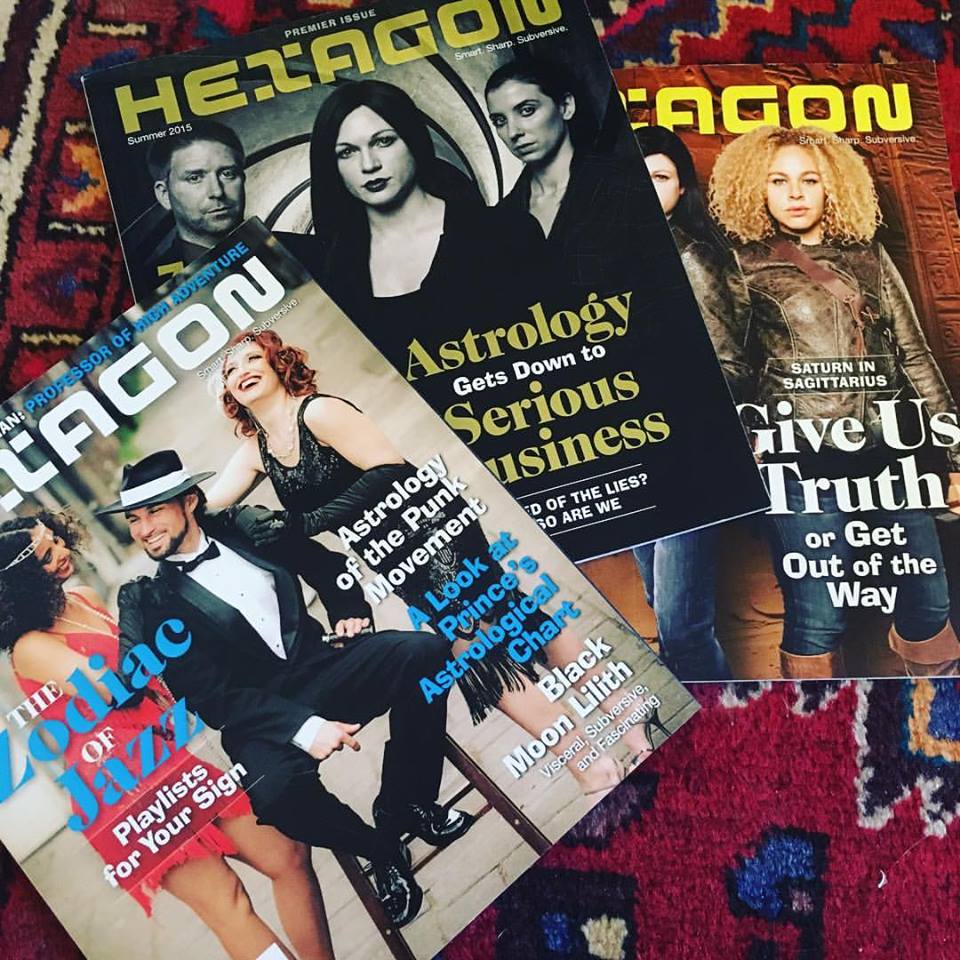(Photo Credit: Juergen Faelchle/Shutterstock)
The following is an 850 word excerpt from “Ladies of the Zodiac: It’s Showtime!”, a 4,500 word article on the astrology of the feminine asteroids that is one of the four features in our premier issue. It was written by Willow of Willow’s Web Astrology, republished with permission. -Matt
Introduction: The Feminine Asteroids
As a reflection of the patriarchal constructs of current human society, we deal in an astrological zodiac that is masculine-heavy, illustrating certain reinforced dynamics on the planet. Seven of the 10 major planets used in astrological analysis are considered masculine (the Sun, Mars, Jupiter, Saturn, Uranus, Neptune, and Pluto) with one (Mercury) considered neutral. Only the Moon and Venus are considered feminine. Important as those bodies are, this is still a whole lot of imbalance.
Women and the feminine influence are far more multi-dimensional and diverse than the loving, pleasing, and supportive mate (Venus), the mothering nurturer (Moon), or the vindictive, vixen/seductress version of the dark feminine.
We pick up some of the slack as far as the feminine influence in the zodiac with the feminine asteroids and dwarf planets.
The four major “secondary” bodies most often used in astrological charts – asteroids Juno, Pallas Athene, and Vesta, along with dwarf planet Ceres – are considered feminine, though these bodies most often play second fiddle to the planets, doing their thing with little recognition or fanfare in mainstream astrology.
An invisible feminine force doing its work from a disempowered position for much less than its due share of recognition, respect, and reward. Sound familiar?
As with the planets, these four bodies have ties to Greek and Roman mythology, which color their themes in astrological analysis.
Unfortunately, the men who created and furthered the mythology that is used in current-day astrology have missed about 50% of the story. They missed the herstory of the history, as they say.

This missing feminine/female influence is apparent in Greek and Roman mythology as well as in much of the standard religious and spiritual imagery of the current day. We’re working with partial archetypal truth at best and straight up patriarchy-approved fabrication at worst, and we have to understand how detrimental these power-imbalanced units of cultural transmission can be.
The feminine bodies used in astrology have been saddled with an Old Boys Club mythology. There is widespread sexual violence, control, and misconduct toward women, among many other offenses, in the stories of those old Greek and Roman dudes. Women are most often in secondary roles with their stories told for them by males, through the male lens.
The threads of misogyny in the symbols and myths reflect current-day societies and structures where underlying hatred of and violence against women are woven right into the fabric. They simmer and poison, a little flicker visible here and there, until they are full-on confronted – repeatedly – and made wholly unacceptable by both men and women.
(The feminine force in men is also suppressed, oppressed, and damaged by the dynamics outlined in this article.)
Instead of carrying the half-truth, misogyny, and sexual violence of this mythology forward in astrological symbolism, it’s time to consciously address it, working the feminine energy free from the karmic weight of these myths.
By exposing this androcentric mythological misogyny, by adding a stronger and more fully-developed female perspective, and by calling the old “Gods” on their crap, we move beyond the old stories and dynamics, advancing an astrology that is more balanced, humane, just, relevant, and true-to-life.
As Saturn (structure) transits Sagittarius (religion, stories, truth) into December 2017, the time is ripe to open into new truth told through cultural symbols, where the experiences of women and the feminine aren’t filtered through a male-dominant lens.

It’s time to carve a new path, shedding light on the domination/subjugation dynamics that are wrapped up so neatly in these mythological images.
Spiritual and religious paradigms past and present have whitewashed out much of the female influence, making it invisible and subservient. But as Saturn transits Sagittarius, it’s time to stand up, speak up, and add the full wisdom and knowledge of the feminine to the scene.
That wisdom and knowledge doesn’t necessarily come in the form of easily-swallowed, non-threatening Glittery Goddesses and Angels and Mermaids and Faerie Nymphs, either. (Much of that was designed to titillate males, anyway.)
The feminine wisdom and knowledge to be integrated is white hot and will shake things up considerably. It requires something of people. It makes people uncomfortable at times. It’s not about being pretty or demure or seductive.
It demands its rightful place – nothing more, nothing less.
Women are used to having to compete with each other for a limited number of spots, for a limited amount of influence.
With Saturn transiting Sagittarius over the next couple years, women will be working their way into full cultural and structural representation – or at the very least, into a full understanding of the detrimental feminine shortfall. As Saturn in Sagittarius builds to a trine to Uranus in Aries in December 2016, we have a chance to unravel these fabricated units of cultural transmission, breaking their spells once and for all.
The Goddesses are breaking out of their fairy tale nightmares. They’re tearing at the Technicolor blue skies, ripping up carefully-manicured, lime green lawns, tossing matches into the castles. They’re standing back as all of creation – the feminine and the masculine – comes spewing forth.












You must be logged in to post a comment.